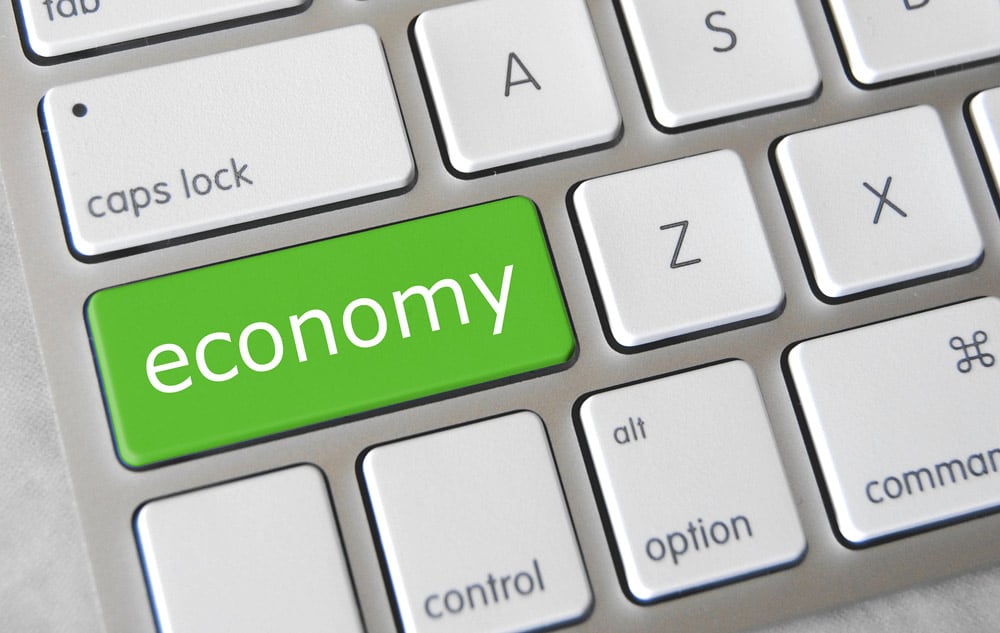Marc Coleman is founder of Octavian Research, an economic research publication and public affairs consultancy. In this guest blog, he examines the various threats to economic recovery
As Member States strive, under EU Commission coordination, to deliver vaccine roll out, a threat to recovery has raised its head. A threat that most commentary assumed would not materialise for at least a year or two: Rising government bond yields. As expectations spread that inflation will be higher than expected this year bond markets are demanding higher yields from investment in government bonds to compensate for rising inflation. Looking to the other side of lockdown, when consumers are finally free to release months of pent up demand and run down accumulated bank balances saved up during lockdown – markets fear inflation will approach and possibly exceed central bank targets in the US and EU. In recent weeks this has led to a significant increase in government bond yields suggesting that markets are increasingly wary of the prospect of the returns on their investment in government debt being eroded by inflation.
On 11th March, the ECB announced that net purchases under its asset purchase programme (APP) would continue at a rate of €20 billion per week and run “as long as necessary to reinforce the accommodative impact of its policy rates” and to “end shortly before it starts raising the key ECB interest rates”. The latter comment indicates that within the ECB, there is also a feeling that inflation could rise, although its forecast is for a fall from 1.5 per cent in 2021 to 1.2 per cent next year.
Compared to a rate of €12 billion a week some weeks before, the rate of intervention signalled an intention to support bond prices and keep bond yields (which move inversely to prices) lower. As recent auctions of both US and French government debt show, markets are nervous about the other side of lockdown. By making them sell bonds and drive yields up, this threatens to push the other side of lockdown further away as yield rises have knock on impacts on corporate borrowing costs.
In the US, where the economic rebound in Q3 last year was remarkable and where vaccine roll out is much faster than in Europe, these fears are particularly acute: Compared to an ECB forecast of 1.5 per cent inflation for 2021 as a whole February’s inflation rate in the US is already expected to have climbed to 1.7 per cent approaching the 2 per cent target (reference value in ECB parlance).
But the ECB’s resources are not unlimited in the short term. Of the €1.85 trillion allocated last year to fight the pandemic, the ECB has about €1 trillion left. Assuming it doesn’t need to ramp up its rate of intervention significantly higher than €20 billion (and it might – see below) this should last until end March 2022. By then most EU citizens – and certainly most vulnerable EU citizens – should have been vaccinated and lockdown should be a thing of the past. But then as Tánaiste Leo Varadkar reminded us this week, last year we thought the lockdown would last only six months. A new strain of the virus – immune to current vaccines – could break all bets of recovery.
At present the ECB predicts a 4 per cent rate of growth this year. But what kind of growth? The unevenness of the recovery will be very marked: Some sectors have kept on growing, particularly high tech and biopharma. Others have been decimated and will not fully recover. Unemployment will be higher and permanently so as the length of the lockdown moves us from a V “bounce-back” style recovery to a badly written U where the right hand side of the U trails up slowly and painfully.
And here is where the real threat to bond markets emerges: As well as the fact that the longer the lockdown moves towards 2022 the more the ECB’s reservoir runs out (yes it could announce an expansion of the €1.85 trillion programme but the impact of this on market confidence could do more damage than good), there is also the fact that this would move us towards something potentially even more lethal: Electoral cycles.
A key fact in this pandemic that has been taken for granted is that with the exception of the US, almost all major economies had elections before the pandemic broke out rather than afterwards. As we move towards 2024 a crop or elections in Germany, France, Greece, Italy, Ireland and the US will loom larger. Already fragmented by a decade of disaffection with “the establishment”, governments in most EU countries were already hampered by having too many coalition partners to make clear decisions. In the Netherlands, for instance (normally seen as a bastion of stability) it took 225 days to form the present government, a government which collapsed in January and now faces re-election and a parliament that is likely to resemble the fractured Italian parliament of the 1970s. For the Netherlands, the implications for fiscal policy making will be limited.
But in Italy, Spain and Greece, where concerns about sovereign debt caused a worrying spike in bond yield differentials with German bunds, the implications of fiscal policy on bond market sentiment – as governments intervene to heal the more permanent wounds of lockdown – could be possibly severe.
Already fragmented governments and a lack of willingness to implement economic reform across the EU has led to the ECB carrying the can for recovery during the decade leading up to Covid-19. Facing even weaker governments post lockdown, the ECB will face a dilemma in 2022 if, having exhausted fully its €1.85 trillion treasure chest, it is forced to delay a normalisation of monetary policy.
Bond markets will not tolerate abnormality forever. Recent bond market tremors were about inflation. But they could be about something much more serious: If more and more sovereign governments are seen to be in a position where it takes months before a government can even be formed – never mind taking decisions – then ratings agencies and bond markets could rapidly increase borrowing costs before the recovery has gained strength.
A political feedback loop could then take hold with weak decision making by governments leads to deteriorating sentiment from markets and bond rating agencies. As the pandemic enters its second year, the realisation needs to dawn that the recovery needs to be well underway by the end of that second year.
The global economy can survive one year of Covid-19 and possibly two. But not three.
 Marc Coleman (marc@octavian.ie) is founder of Octavian Research, an economic research publication and public affairs consultancy that wrote the world’s first researched strategy response to the Covid crisis (download www.octavian.ie ) and currently produces the world’s first weekly Covid-19 specific economic and business client research note (now in its 32nd edition). He works with leading clients across industry, financial services and government agencies to produce policy influencing research and publications. He has authored five influential books on the current and previous recoveries and worked as an economist with the European Central Bank, Department of Finance, as Economics Editor of the Irish Times and Newstalk 106fm, a Sunday Independent columnist. He is a leading speaker, event host and policy analyst.
Marc Coleman (marc@octavian.ie) is founder of Octavian Research, an economic research publication and public affairs consultancy that wrote the world’s first researched strategy response to the Covid crisis (download www.octavian.ie ) and currently produces the world’s first weekly Covid-19 specific economic and business client research note (now in its 32nd edition). He works with leading clients across industry, financial services and government agencies to produce policy influencing research and publications. He has authored five influential books on the current and previous recoveries and worked as an economist with the European Central Bank, Department of Finance, as Economics Editor of the Irish Times and Newstalk 106fm, a Sunday Independent columnist. He is a leading speaker, event host and policy analyst.

